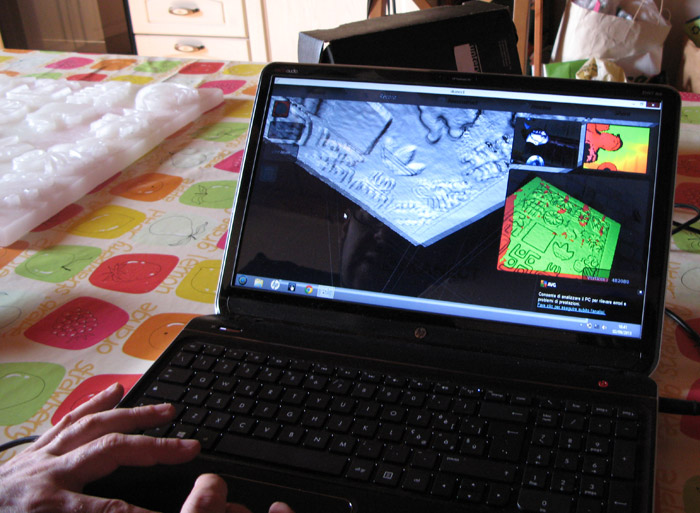The scale model used for the planning phase is bigger than the programmed size of the book, as the scanning process is considerably rougher and less reliable than the printing process; and in fact this is the reason for the slabs to be 48 cm-wide squares, while the square book is only 19 cm wide.
When Unterwelt teamer Federico Baciocchi and I first set to scan the slabs several problems arose: the small infrared scanner (the functioning of which is based on a comparison between the first detection of the surface to scan and the following ones) had blind spots, so we had to patch it up by sticking presbyopic lenses onto it with adhesive paper tape in order to increase its resolution. However, the patch proved to be an unsatisfactory fix, which subsequently decided us to limit the surface of the slabs that was scanned in one shot to the equivalent of only 4 symbols, which we re-assembled later into images of the whole slabs by using a 3D digital graphics program.
In order to obtain an even higher degree of fidelity to the matricial slabs we decided to make some additional photometric detections of these, both by frontal and lateral perspectives.
 |
| Surface detection using a 3D infrared scanner |
 |
| Monitoring of the scanning process |
 |
| Lens-corrected scanner for increased definition |
|
 |
|
| |
Photometric survey using a digital camera |
|
|
|